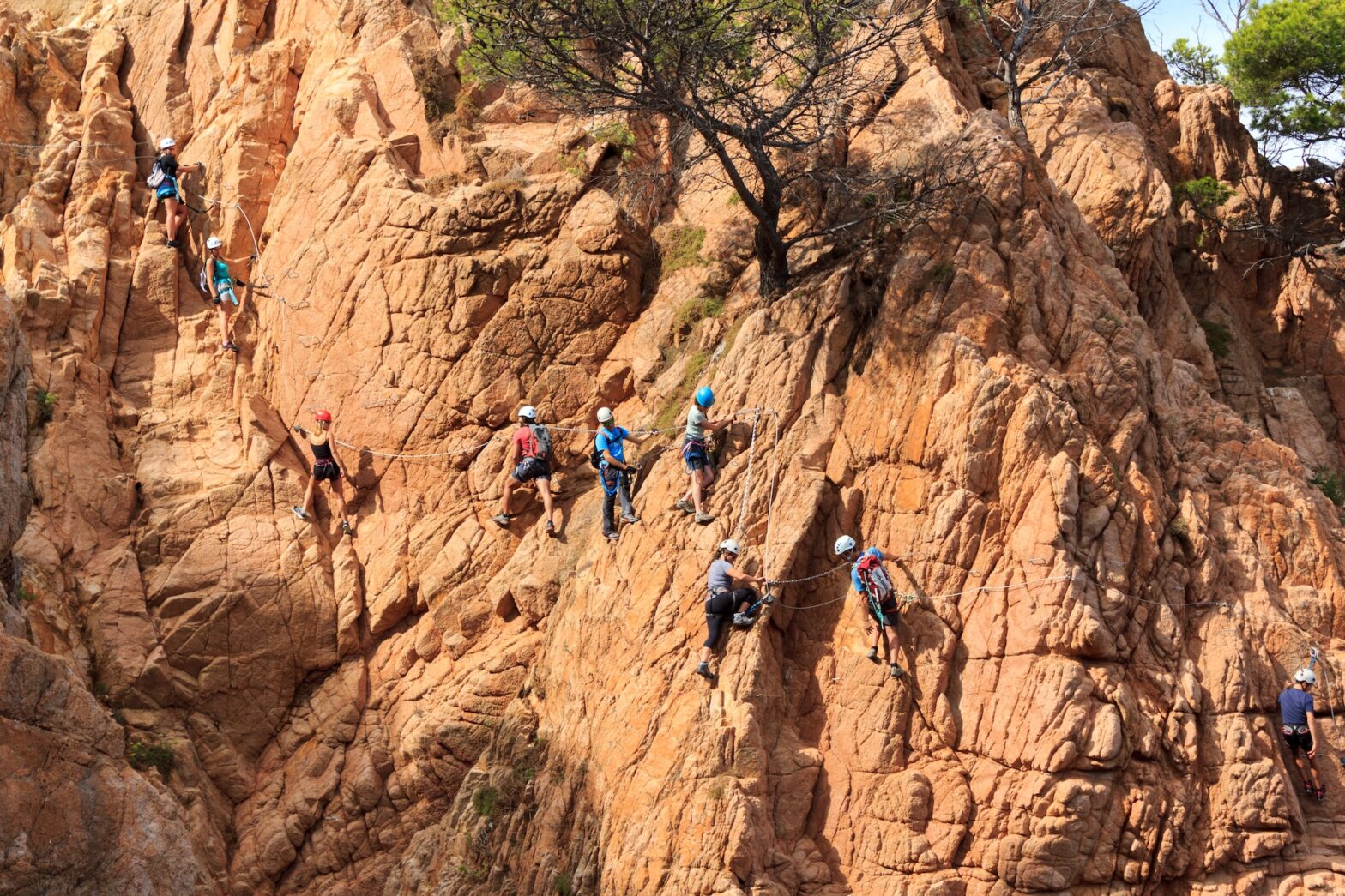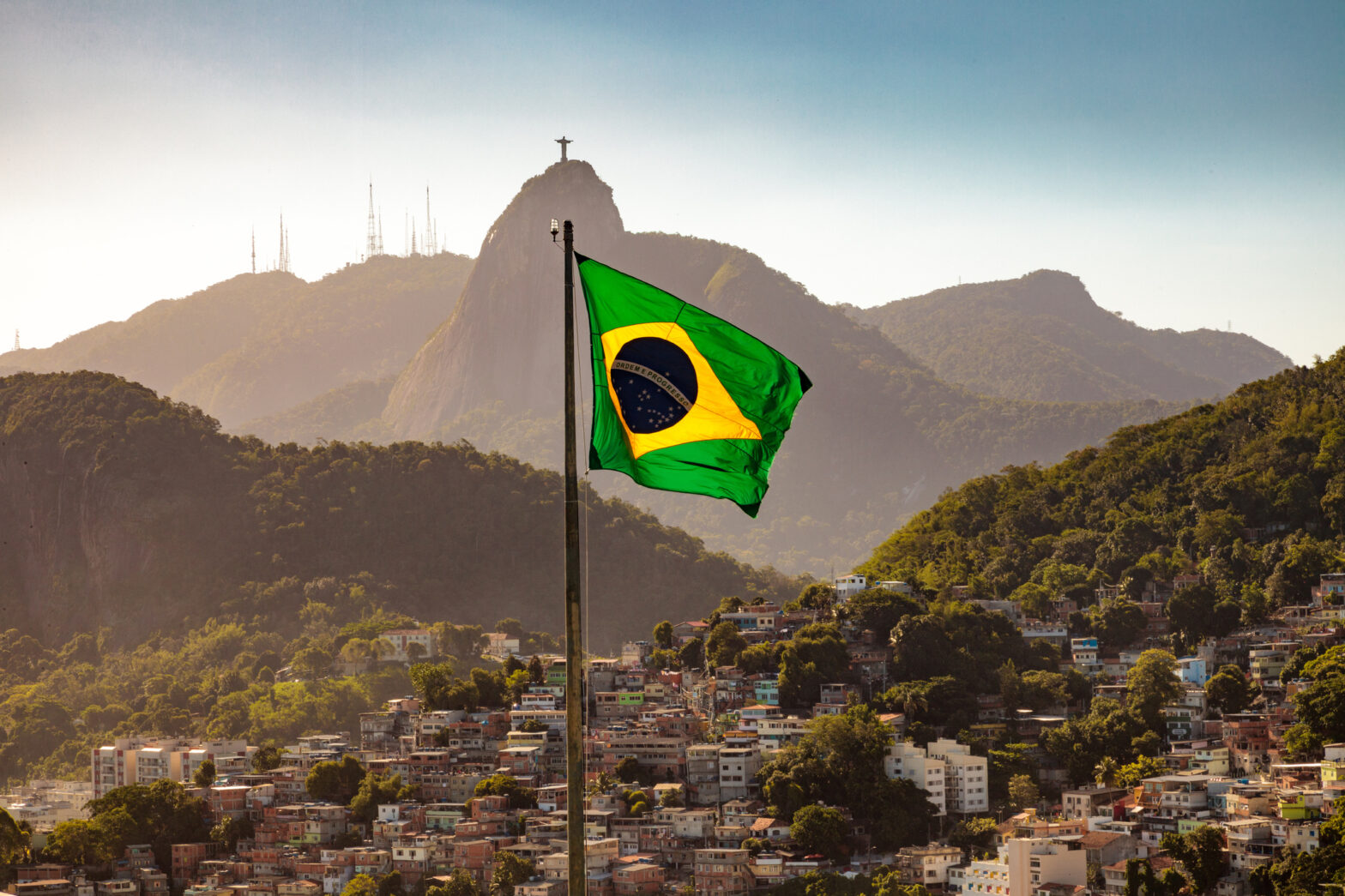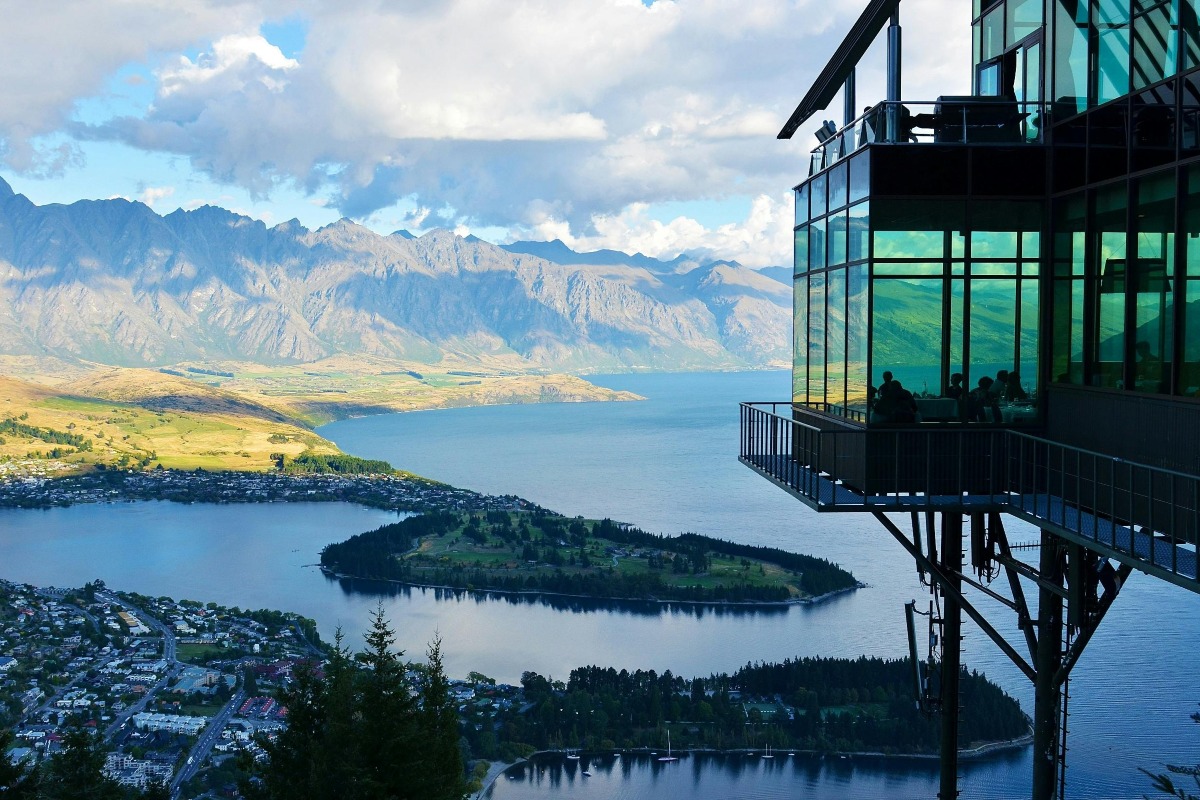Via ferrata is Italian for “iron road.” It describes climbing routes with safety wires, metal rungs, ladders, footholds, iron pins, or other permanently attached features across steep, rocky terrain. European mountain ranges have many via ferrata. The most well-known is in Italy’s Dolomites mountains, where over 700 via ferrata pathways are installed.
Via ferrata were first used in the late 1800s by mountain guides seeking to help their clientele cross mountain landscapes. During World War I, military leaders repurposed these routes for battle rather than recreational enjoyment. Today, they are enjoyed by sports enthusiasts far and wide who are looking for challenging hikes to test limits.
Trail Overview
Via ferrata in Italy’s Dolomites suit all ages and experience levels. Long and short passageways, challenging and beginner-friendly crossings, and routes with low or high elevations allow many people to enjoy this activity. Most via ferrata in the Dolomites are grade 2C and 3A-C routes with some options for 4A. The most beginner-friendly in the Dolomites is Via ferrata Gran Cir; starting at Passo Gardena, the ascent takes a mere 60-90 minutes. The Marmolada is the highest via ferrata in the Dolomites. Its peak is 3342 m. This ascent takes a grueling 7 hours to climb, and about half of that time will be via ferrata.
Given the location of the Dolomites in the high-altitude Alps, it is best to undertake these types of hikes between June and September, when the summer climate helps to keep the trails open and unencumbered by snow.
Permits And Regulations
No permits or passes are necessary for visiting the Dolomite Mountains via ferrata. An international driver’s license for driving to and from trails is a good idea.
“Refugios,” log cabins run by locals, offer overnight accommodations and affordable meals. Hikers are advised to look into these type of accommodations beforehand to plan their stays while hiking the Dolomites.
Trail Highlights And Points Of Interest
Many beautiful bird species enjoy the surrounding skyline of the high-altitude Dolomites. Birds local to the area include golden eagles, woodpeckers, pygmy owls, partridges, and the black grouse. Brown bears, roe deer, the fire salamander, and the Alpine newt are residents of the green forests and mountains below.
There are many interest-specific activities to participate in while exploring the via ferrata mountainsides. For example, there are photography tours that take hikers by the regional plants and flowers of the Alps. Beautiful flowers like Orange Lilies, Vanilla Orchids, Blue Alpine Daisies, Forget-Me-Nots, and the beloved Edelweiss are all on display in these type of hikes.
In addition, there are also historical and pop culture tours. Some tours explore the paths used during World War I and provide details on how soldiers used the trails for survival or stocking supplies. Other tours highlight Hollywood scenes like the famous one from “Cliffhanger,” where Sylvester Stallone hangs suspended in mid-air. This scene was shot along the Ivano Dibona via ferrata.
Safety Considerations
While suspended miles above tree lines only by manufactured materials affixed to mountainsides, “Don’t look down” would be any sane person’s new mantra. Fortunately, paths are safer than they appear using the proper equipment. “Via ferrata kits” have all the essential gear to experience climbing in the Dolomite Mountains. Kits can be purchased or rented on-site, including a helmet, a sitting harness, and a Y lanyard.
Hikers should be mindful to wear good climbing shoes with solid ankle support, or a hiking shoe (for longer walking distances). Layered clothing, sunglasses, a hat, and SPF 50+ sunscreen are all a must as the climate can change in the Dolomites pretty quickly. One moment a hiker will be in the shaded alcove of a trail and then, around the next bend, the sun may beat down on faces. So make sure to wear that sunscreen and bring layers of clothing.
Other essentials for the via ferrata are padded fingerless gloves, a small backpack with a sleeping bag liner, toiletries, fresh socks, snack food, and water. Fill water bottles with tap water or soil-filtered natural spring water sources, which are plentiful in the Dolomites. Water bottles and meals are also for sale at “refugio” log cabins, which is helpful as hikers can concentrate on only packing essentials for the trails.
In the Dolomites, dial 112 (emergency operator) or 118 (mountain rescue operator) for emergency assistance. Once connected to an operator, stay calm, listen, and answer questions in a precise manner. Describe where the incident occurred, the current location, and how many people are in the group. Be sure to stay with any injured party members until help arrives, unless directed otherwise.
Planning And Preparation
Via ferratas are one-way up. Therefore, remain committed to finishing each hike and set out early to avoid crowds. Become acclimated to elevation changes and learn to use technical hiking equipment at beginner via ferrata courses before moving to more advanced ones. Most people can complete Via ferrata hikes in a single day, and “refugios” are always near.
People Ask: Hiking the Via Ferrata In Italy’s Dolomites
Q. What is via ferrata?
A: Via ferrata is a mountain route equipped with fixed cables, ladders, and bridges to make it easier and safer for hikers to traverse.
Q: What is the difficulty level of hiking via ferrata in Dolomites?
The difficulty level of hiking via ferrata in the Dolomites varies from easy to extremely difficult. It depends on the specific route you choose.
Q. What equipment do I need to hike via ferrata?
A: You will need a harness, helmet, a via ferrata set (which includes a shock-absorbing lanyard and carabiners), sturdy hiking boots, gloves, and appropriate clothing.
Q: Do I need climbing experience to hike via ferrata?
No, you do not need climbing experience to hike via ferrata. However, you should be reasonably fit and not afraid of heights.
Q: Can I hike via ferrata alone?
A: Most people should only hike via ferrata with a partner or guide for safety reasons.
Q: How long does it take most people to hike via ferrata in the Dolomites?
A: The duration of the hike depends on the route chosen. It can take anywhere from a few hours to a full day.
Q. What is the best time of year to hike via ferrata in the Dolomites?
A: The best time to hike via ferrata in the Dolomites is from June to September when the weather is mild and the routes are accessible.
Q. Is it safe to hike via ferrata in the Dolomites?
A: Yes, hiking via ferrata in the Dolomites is safe if you follow the safety rules and use appropriate equipment.
Q: Can children hike via ferrata in the Dolomites?
A: Yes, but adults should accompany children and ensure they have the right equipment for their body size.
Q: Are any guide services available for hiking via ferrata in the Dolomites?
Many guide services are available for hiking via ferrata in the Dolomites. Inexperienced hikers should hire a guide.
Via ferrata are a fun climbing activity for people of all ages and skill levels. Over 700 courses are in Italy’s Dolomites, featuring fabulous views of rock towers, streams, flora, and fauna. Hiking via ferrata does require technical equipment, but it is affordable and available for rent. Climbers can complete courses in a few hours or a full day. The refugios cabins are plentiful throughout the region and offer affordable meals and lodging, which makes for an excellent option for overnight shelter.
Via ferrata trails are a fantastic way to experience awe-inspiring natural views combined with man’s ingenuity.





